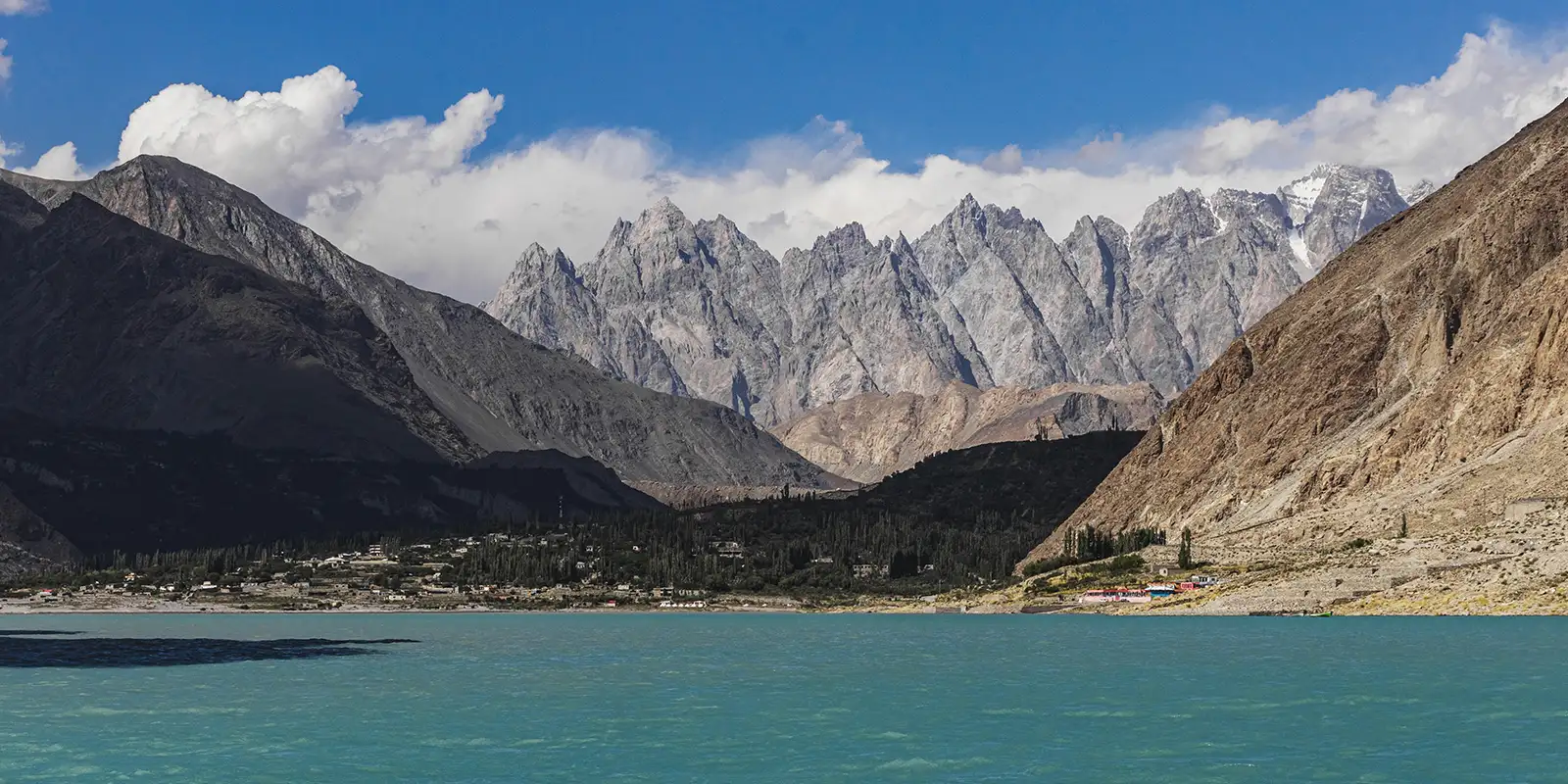Attabad Lake, a geological wonder located near the rugged grandeur of Pakistan’s Karakoram Highway, has captured the world’s attention. Its unique origin, stunning views, and sapphire waters make it a captivating destination.
Facts
Attabad Lake owes its existence to a dramatic event in recent history. In January 2010, a powerful earthquake triggered a massive landslide in the Hunza Valley of Gilgit-Baltistan. The landslide dammed the Hunza River, creating a vivid blue lake that stretches for 13 miles. The lake quickly became an awe-inspiring attraction for travelers.
The Hunza Valley features stunning landscapes and rich cultural heritage. The Karakoram Highway, one of the world’s highest paved roads, connects Pakistan and China and is a critical trade route between the two countries. The lake’s location within the mountainous terrain of Gilgit-Baltistan makes it a natural spectacle amidst the towering peaks of the Karakoram Range.
Attabad Lake is situated in the region of Gojal, which extends from the southern end of the lake to the Chinese border. Gojal is home to a diverse population representing various ethnic and linguistic groups, including the Wakhi and Burusho communities. The people of Gojal are known for their traditional craftsmanship, particularly their intricate embroidery.
Swimming in Sapphire
Locals and tourists enjoy swimming in Attabad Lake. From May to September, the water temperature is generally milder and more suitable for swimming. At this time, the water temperature can range from 53°F to 64°F (12°C to 18°C). It’s not recommended to swim for long periods of time during the colder months, as the water temperature can be quite chilly.
No matter when you visit, the striking blue color of Attabad Lake is a sight to behold. The lake’s coloration is a result of its glacial origin. The lake is fed by the melting glaciers of the Karakoram Range, which carry fine rock particles known as glacial silt. This silt reflects the shorter blue wavelengths of light, giving the lake its mesmerizing azure appearance. The color intensifies during the summer months as the glaciers melt and feed the lake with fresh, mineral-rich water.
When to Visit and Activities
Bluer waters and warmer temperatures make May to September the best time to visit Attabad Lake. The months of June and July are particularly popular, when daytime temperatures in the Hunza Valley typically range from 68°F to 86°F (20°C to 30°C). Nighttime temperatures can be cooler, so it’s a good idea to have a light jacket or layers for the evenings.
The lake’s calm waters during this time of year create ideal conditions for boat rides and kayak excursions. During these months, cycling, fishing, and hiking are also popular.
Hikers can visit elevated viewpoints like Hussaini Suspension Bridge, Rakaposhi Base Camp, or explore the nearby Borith Lake. Anglers at Attabad Lake can cast their lines for trout while taking in the tranquility of the surroundings. Cyclists visiting the Hunza Valley have access to cycling routes that provide incredible views of the Karakoram Range.
Photography
Photographers have a wealth of opportunities to capture the raw beauty of the landscape. The lake’s vivid blue waters stand in stark contrast to the surrounding rocky terrain. Snappers can take advantage of the dramatic backdrop of the towering Karakoram Range, including peaks like Passu Cones and Shisparé Sar in their photos. Early morning and late afternoon light play on the lake’s surface, creating beautiful reflections and emphasizing the rich azure hues.
The wooden fishing boats add a human element to the composition and are often adorned with vibrant colors. The rugged hillsides are dotted with poplar trees, creating interesting contrasts in texture and color. While visiting, photographers can explore various angles around the lake. The landslide mass that blocks the Hunza River is a great place for tourists to take photos of Attabad Lake. There is also an area called Baskochi Meadows. It features a roadside lake viewpoint and an aerial view option accessible via hike.







